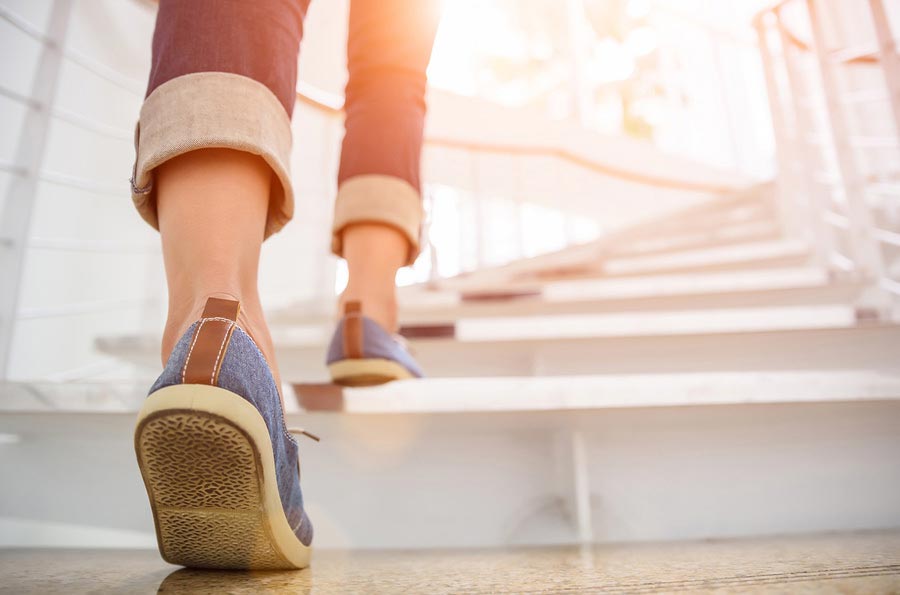Reviewed by Phillip Waite, Ph.D.

To most people getting fit with chronic illness sounds like an oxymoron. The old me thought that people that were chronically ill simply did not exercise, ever! But experience has taught me that exercise is key to healing well with chronic illness. I’m not talking about the 6 pack abs, rock hard body kind of fitness you see on infomercials on late night TV. No, I’m referring to the kind of fitness that allows you to just get moving, to be able to enjoy the world around you, to be able to go on a walk with your dog or your kids. Sure, there are exceptions and there will be times when chronic illness prevents you from even taking small steps. But if you don’t start somewhere, set realistic goals and reach for them, you likely won’t ever attain them.
About a year ago, I decided I needed to get fit. I wanted to look healthier and feel better. Weight loss would be a bonus, but it wasn’t my main goal. mapped out a fitness plan and began to follow it. That lasted about four weeks until I got sick, really sick. Repeated rounds of flareups meant I couldn’t even think about exercising when all I felt was constant fatigue and body wide pain. My fitness plan was put on hold. I launched into a 9 month torrent of doctor appointments, medical tests, and hospital visits. It was an exhaustive process that finally resulted in my diagnoses of Fibromyalgia, Sjogren’s Syndrome and Irritable Bowel Syndrome (IBS).
Knowing what kind of illness I was dealing with was absolutely critical. It allowed me to get on new, targeted medications to better treat my symptoms. But probably more important I felt a huge sense of relief having a diagnosis and how to manage it. One of the recommendations for someone with Fibromyalgia is regular exercise to ease the painful symptoms. This is because exercise boosts endorphins that can not only counter pain, but can also ease depression, anxiety and stress and give you a better sense of control over your health. It can also help promote a healthy balance of serotonin that is so important to maintaining a positive outlook.
For people with any kind of chronic illness, pacing yourself when starting to exercise is very important. Starting slow with low-impact activities like yoga, Pilates, stretching, swimming, or walking is the best approach. Your goal initially should be just to get moving. That’s it…. not weight loss, not increasing muscle mass, and not building the perfect body. Keep it realistic. Just slowly get moving. Soon you’ll find your daily outlook improving and your stress levels diminishing.
I started by signing up with a wellness program offered by my employer. I knew I would have extra motivation to follow through on my goals if someone else was tracking my progress. If you don’t have access to something like that, enlist your friends and family to keep you motivated and on track with your goals. Next I went through several diagnostic tests to determine my baseline health and consulted with my doctor before putting together a plan to get moving.
I decided to start walking 3 times per week for about half an hour. That’s only 90 minutes (approximately 6 miles) of walking each week which doesn’t sound like very much but for me it was a challenge! I hadn’t really exercised regularly in over 10 years. But I also knew that it was a goal I could handle without overdoing it. The last thing I wanted was to quit because I had set aggressive goals. My fitness goal was simple: slow and steady gains in my overall health and wellness.
To get some extra motivation I bought myself some new workout clothes and very comfortable running shoes. Because I’m kind of a techie, I also purchased a Nike+ Fuelband to track my daily activity, calories and steps. It’s not only a motivator, it looks cool too! To help me reach my nutritional goals I started using MyFitnessPal on my iPhone to keep a daily journal of my meals, exercises, and weight changes.
I’m now nearly 6 weeks into my fitness plan and doing very well. I’ve gradually increased the pace of my workouts each week to include brisk walking, jogging, and stationary cycling. Initially I dealt with some expected stiffness and achy joints but I noticed after the first few weeks these started to ease. I usually feel good after working out now and as a bonus I’ve lost about 7 pounds! I’m also sleeping better, getting more restful and restorative sleep. I’ve discovered a lot of mental benefits too. I am more alert during the day. I also feel more confident and in control of my health. Sure there are still days when I’m flaring and don’t feel well enough to exercise. On those days I don’t give myself a hard time about it. You have to accept that there will be valleys between the mountain highs. That way I don’t get discouraged when I don’t reach my fitness goals. Overall though I know I’m making progress and helping my body heal. There’s nothing like exercise to tell your body who is in charge. You are!!! So what’s stopping you? See your doctor, set realistic goals and just get moving.
Did you find this article helpful? Join us at HealingWell for support and information about your condition. Connect and share with others like you.




